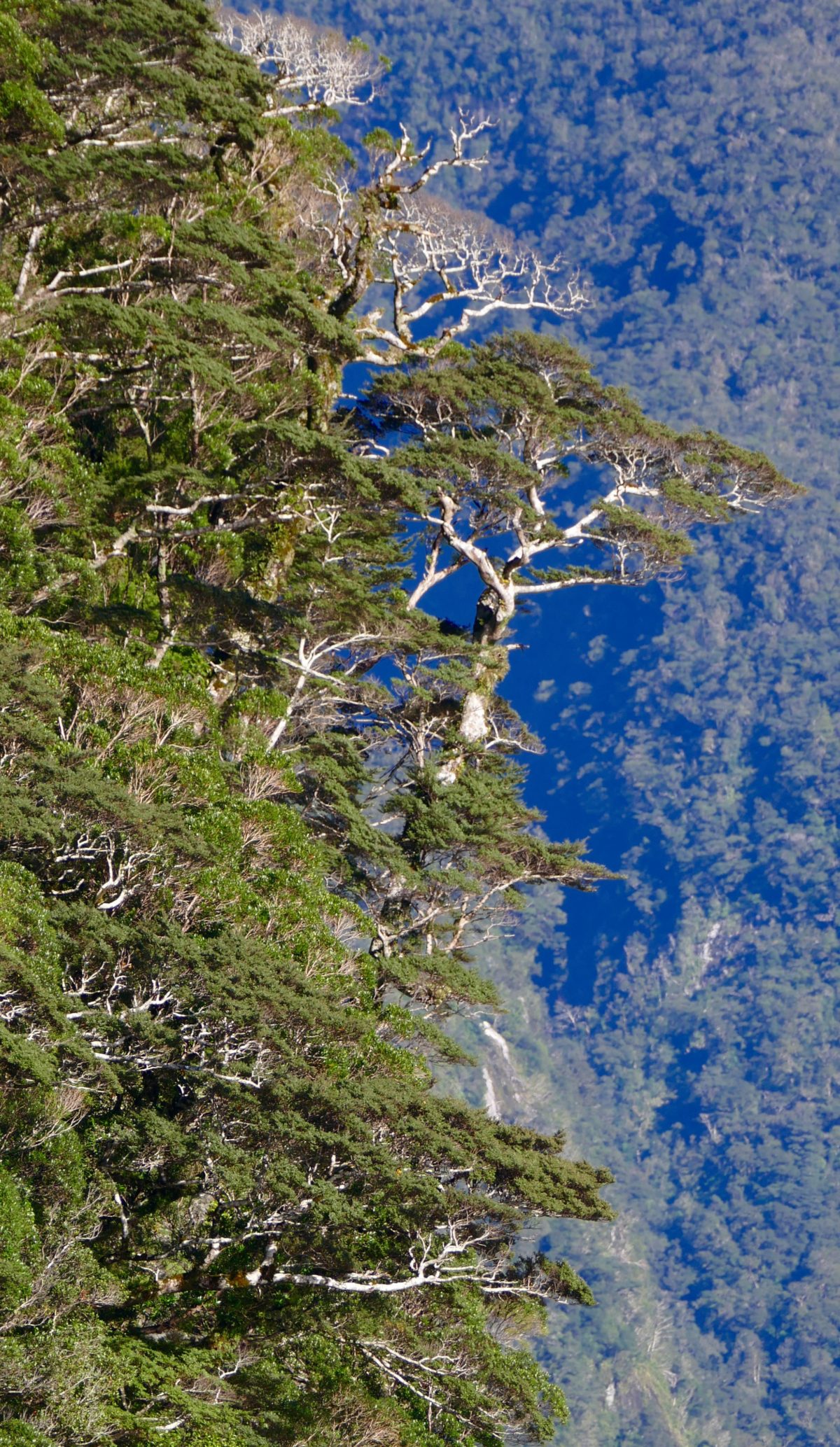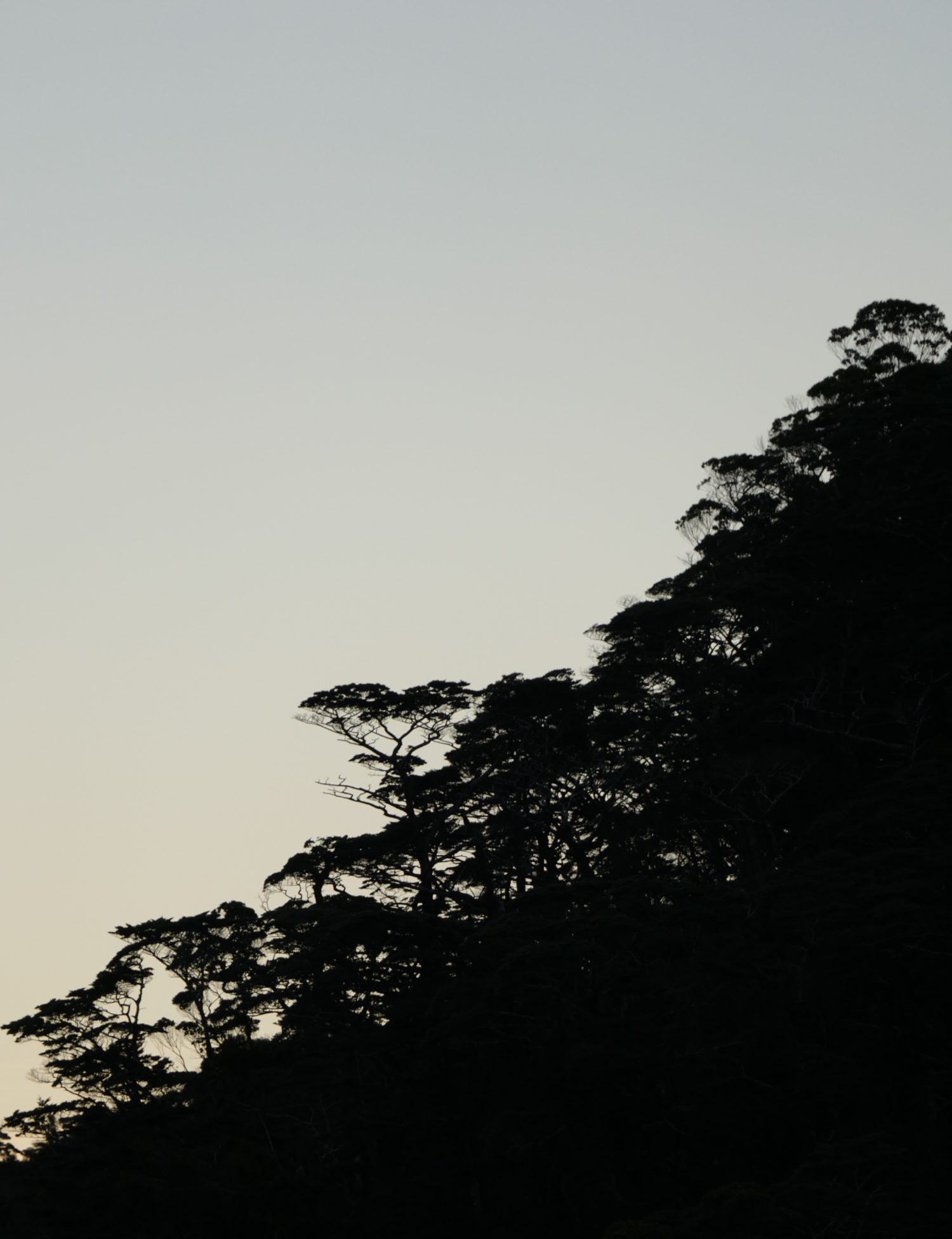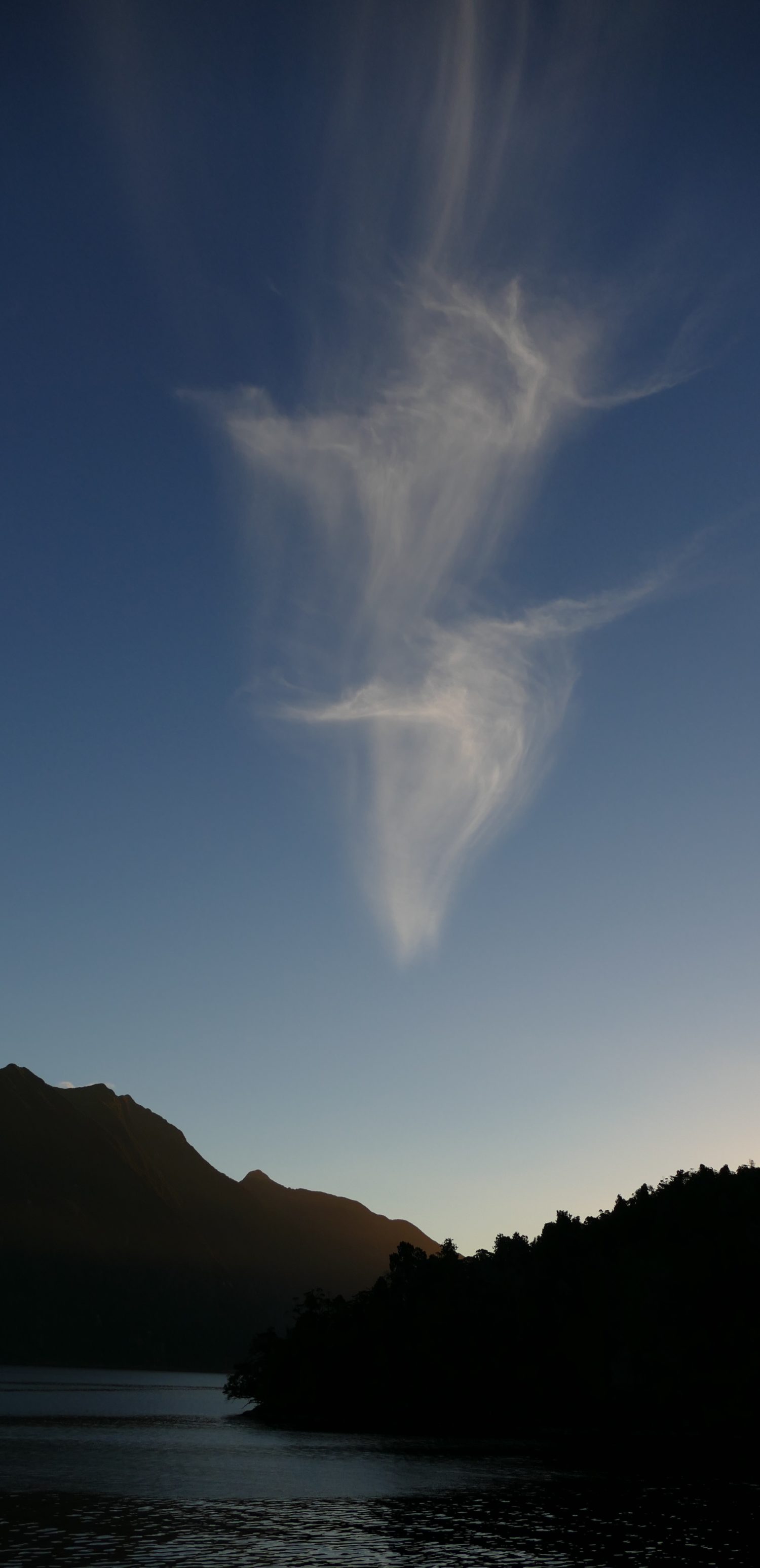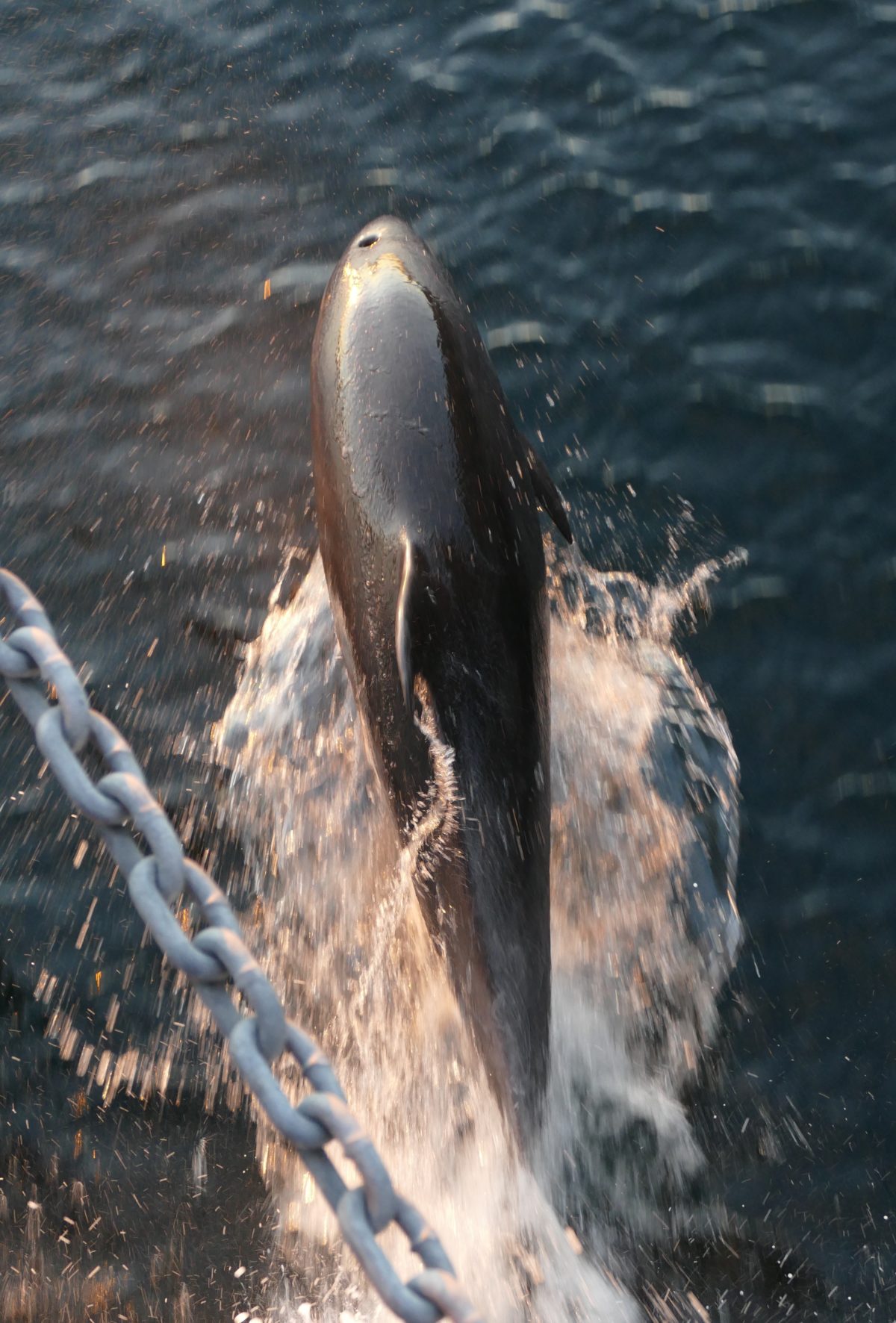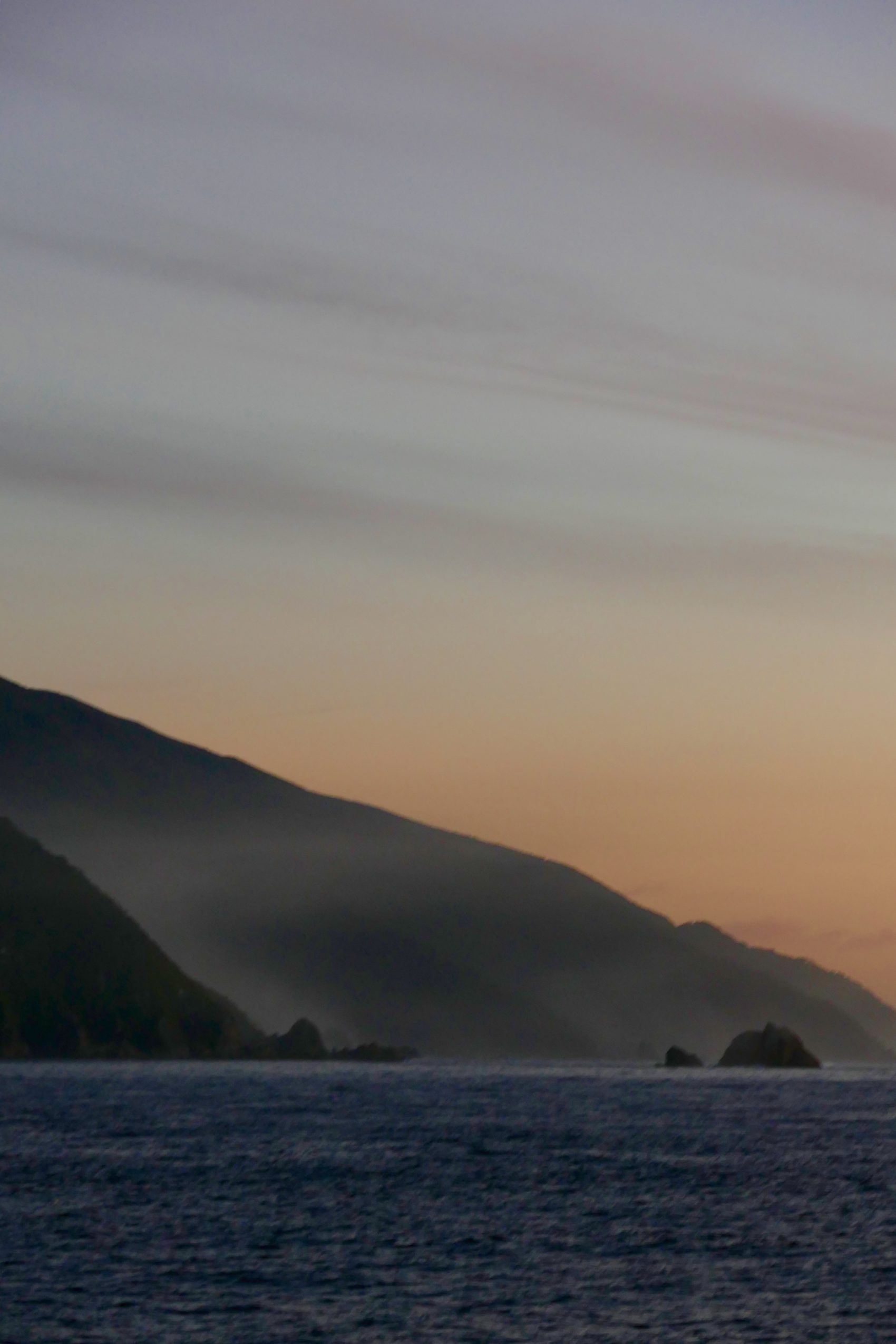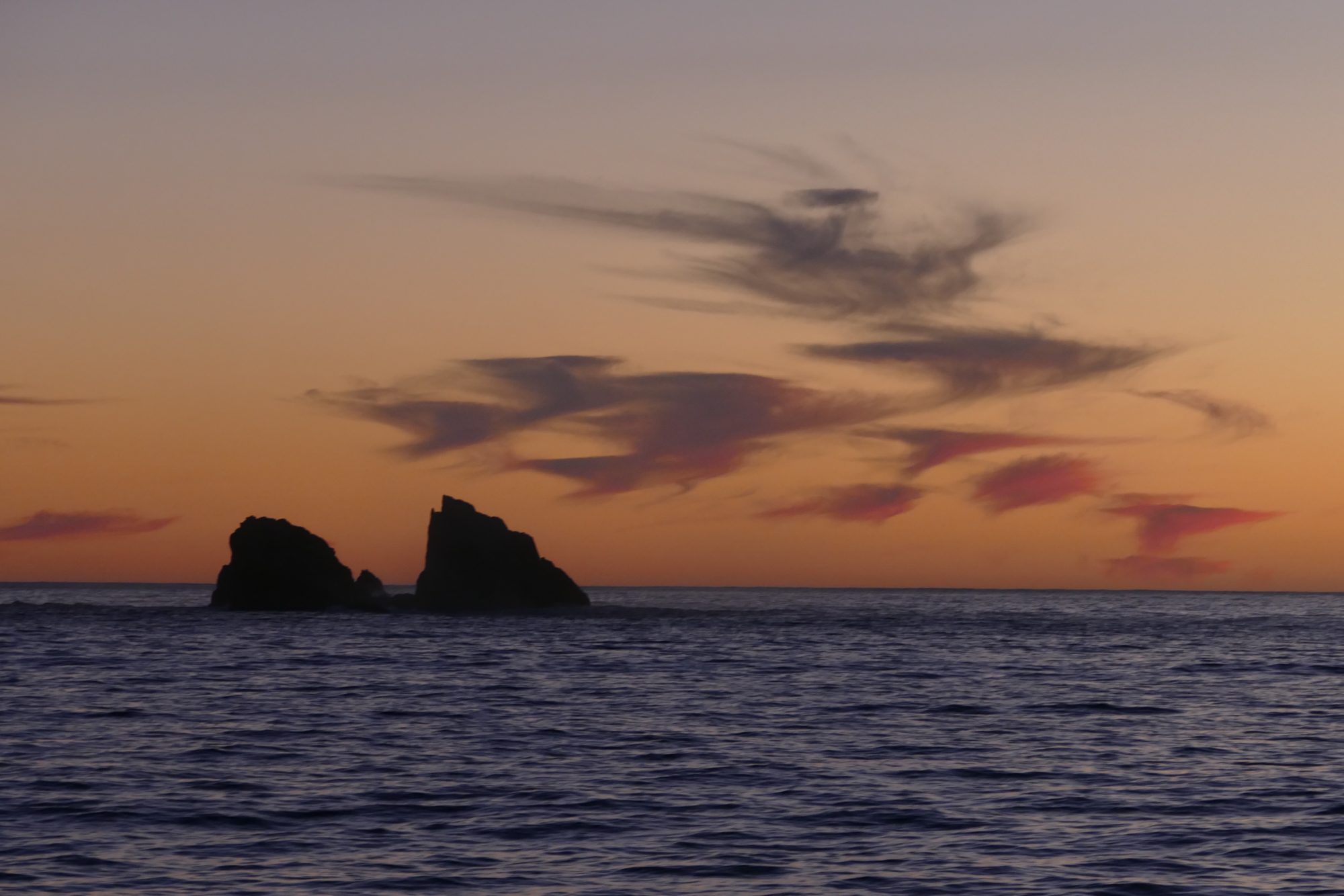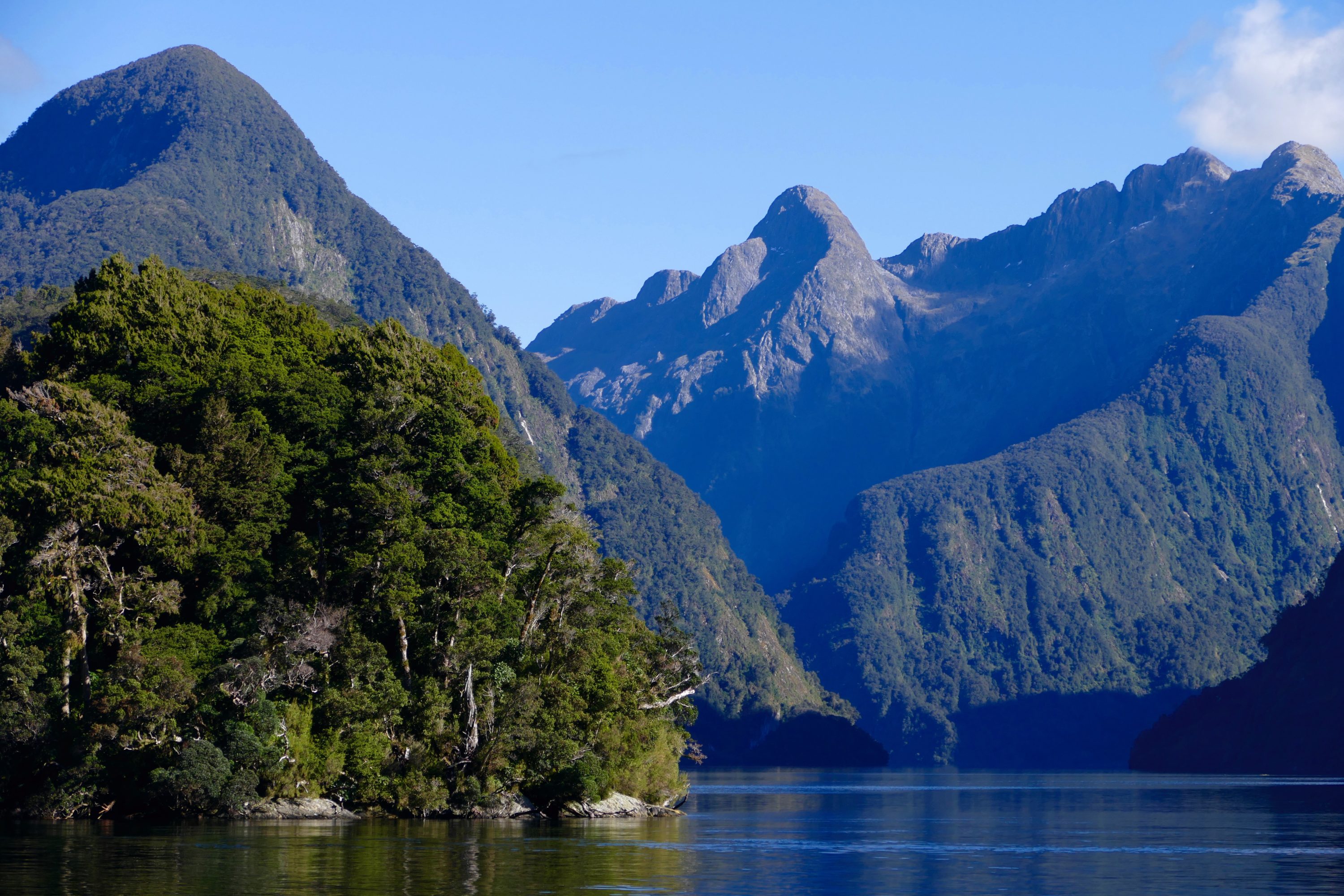One of the most glorious places on earth, Doubtful Sound was even lovelier the next morning…as you will see, eventually, in this post’s sequel.
Neither Doubtful Sound nor Milford Sound are sounds; they are two of the fourteen fjords/fiords in New Zealand’s Fiordland.
The much better known Milford is much the smaller.
At 421 metres Doubtful Sound is New Zealand’s deepest fiord – 91 metres deeper than Milford.
Doubtful Sound is three times longer than Milford and its surface area ten times larger.
You can drive to Milford, even “enjoy” a traffic jam on the way in or out.
You cannot drive to Doubtful Sound.
However, reaching it is anything but arduous.
The ferry ride across Lake Manapouri is spectacularly beautiful in its own right.
Courtesy of a hydro scheme (which – after much tumult, outrage, legal action and public pressure – was much-modified to ensure that it would not trash the lake’s ecology and beauty) at the lake’s western end, a road was built over the Wilmot Pass to Doubtful Sound.
The road is New Zealand’s most expensive, per metre of construction cost; it is the only such “mainland” road to stand alone, connected to no other.
Tourists disembark, board a bus, and not many minutes later they reach the top of the Wilmot Pass.
Suddenly, they look down into Doubtful Sound; vertically speaking, it is 671 metres below.
The open ocean is more than forty kilometres away.
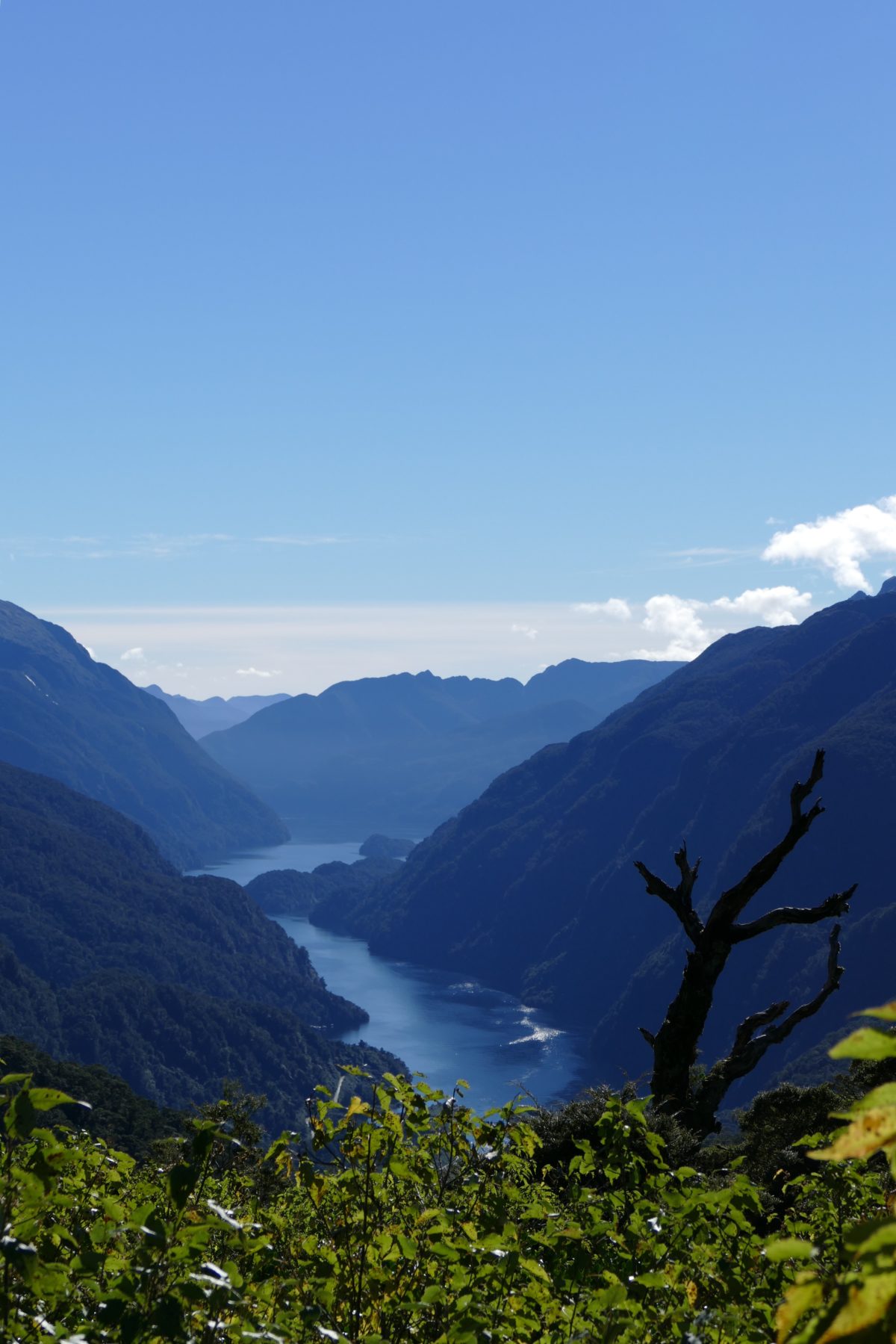
Patea – the Maori name for Doubtful Sound – means the place of silence.
In 1770 James Cook sailed along what is now known as Fiordland, but he did not dare sail into what he named “Doubtful Harbour”.
Far larger vessels than his now safely ply its glacially-carved depths, but it remains a place in which nobody dwells.
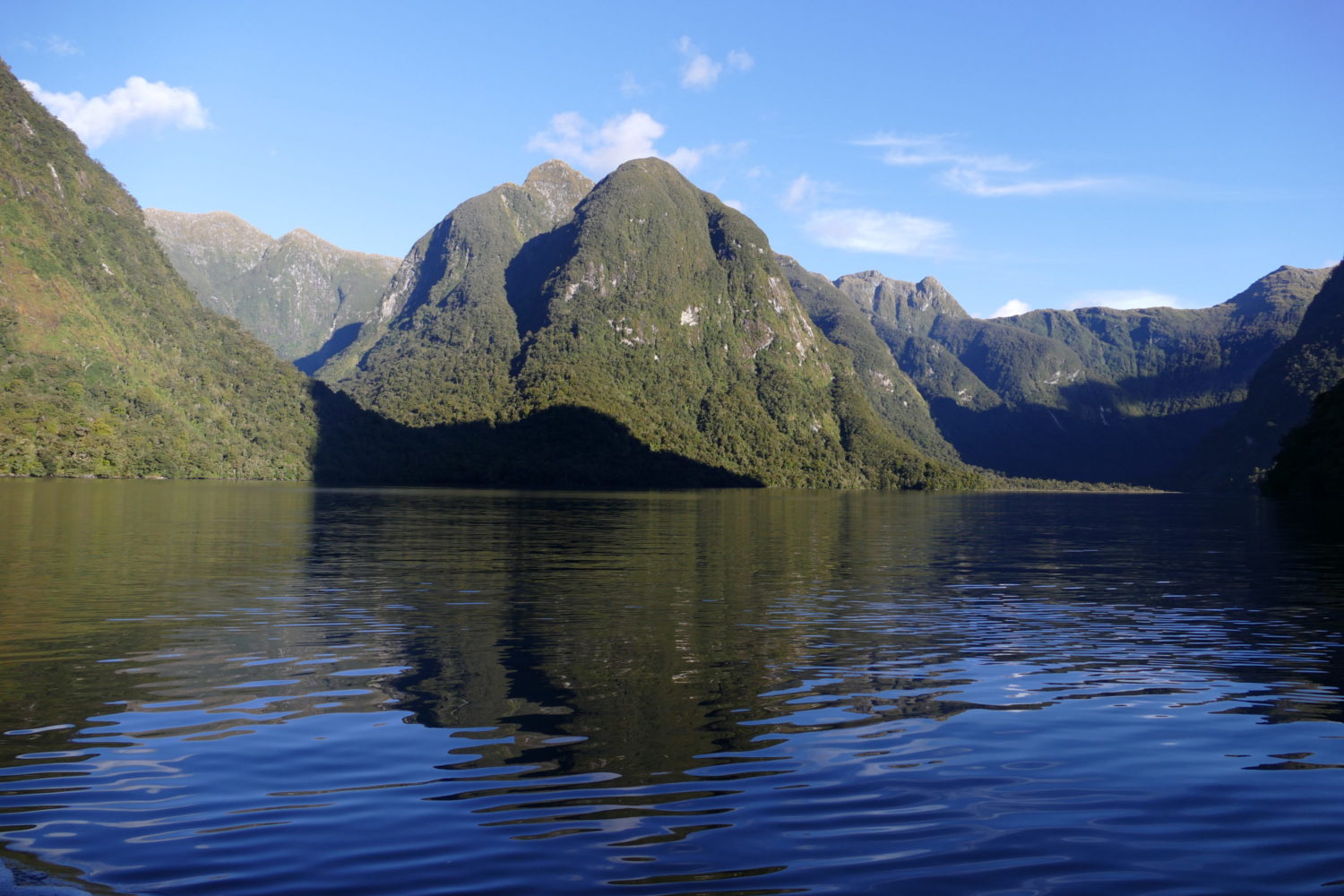
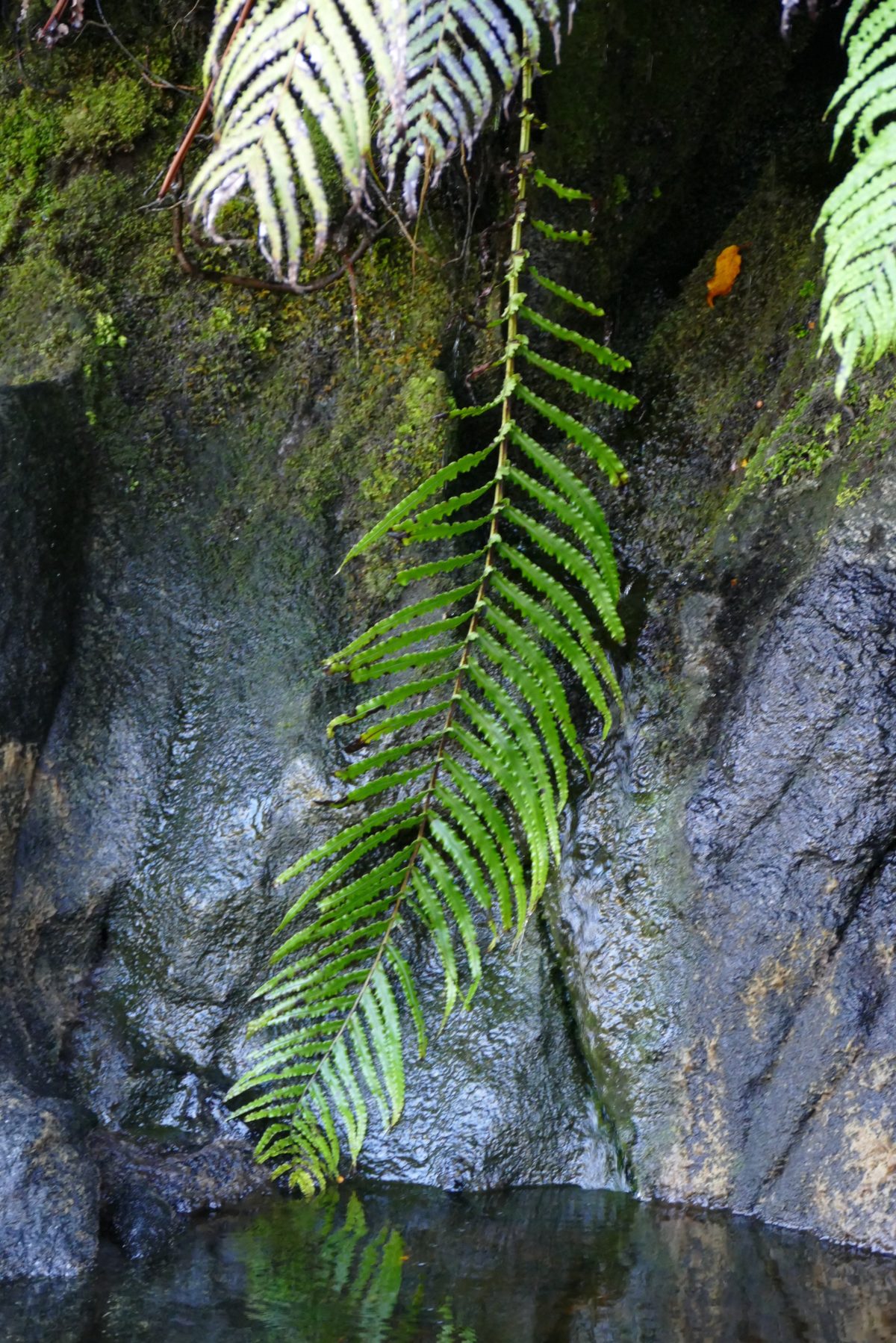
An overnight boat trip on Doubtful Sound is likely to provide even the most “I’ve been everywhere, man” traveler with one of his or her lifetime’s more sublime experiences.
The sequel to this post will address “the next morning” part of that trip, and also offer information about what lives in this fiord’s waters…and why.
It will also attempt to explain the phenomenon which the next image depicts. “Catastrophe Forest” is aptly named, but its story is one of successful adaptation rather than environmental degradation.
